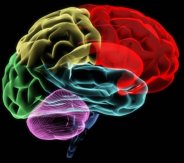Register now or log in to join your professional community.

I fully agree & endorse the experts' submissions.
Thanx for the invitation

The decisions that are based on the mental process of decision maker and its intuition are the non programmable decisions.
The decision maker must choice the relevant information, decrypt the situation, detect problems, and feel the choices that seem opportans with its own mental patterns.
Intuition is based on own features to the decision maker

One of the more enduring ideas in psychology, dating back to the time of William James a little more than a century ago, is the notion that human behavior is not the product of a single process, but rather reflects the interaction of different specialized subsystems. These systems, the idea goes, usually interact seamlessly to determine behavior, but at times they may compete. The end result is that the brain sometimes argues with itself, as these distinct systems come to different conclusions about what we should do.The major distinction responsible for these internal disagreements is the one between automatic and controlled processes. System 1 is generally automatic, affective and heuristic-based, which means that it relies onmental “shortcuts.” It quickly proposes intuitive answers to problems as they arise. System 2, which corresponds closely with controlled processes, is slow, effortful, conscious, rule-based and also can be employed to monitor the quality of the answer provided by System 1. If it’s convinced that our intuition is wrong, then it’s capable of correcting or overriding the automatic judgments.One way to conceptualize these systems is to think of the processes involved in driving a car: the novice needs to rely on controlled processing, requiring focused concentration on a sequence of operations that require mental effort and are easily disrupted by any distractions. In contrast, the well-practiced driver, relying on automatic processes, can carry out the same task efficiently while engaged in other activities (such as chatting with a passenger or tuning in to a radio station). Of course, he or she can always switch to more deliberative processing when necessary, such as conditions of extreme weather, heavy traffic or mechanical failure.
In terms of decision-making, the description of System 2 bears a close resemblance to the rational, general-purpose processor presupposed bystandard economic theory. Although these economic models have provided a strong and unifying foundation for the development of theory about decision-making, several decades of research on these topics has produced a wealth of evidence demonstrating that, in practice, these models do not provide a satisfactory description of actual human behavior. For instance, it’s been recognized for several decades the people are more sensitive to losses than to gains, a phenomenon known as loss aversion. This doesn't fit with economic theory, but it appears to be hard-wired into the brain.A major cause of these observed idiosyncrasies of decision-making may be that controlled processing accounts for only part of our overall behavioral repertoire, and in some circumstances can face stiff competition from domain-specific automatic processes that are part of System 1. One recent compelling demonstration of this phenomenon comes from Princeton University psychologist Adam Alter and colleagues, who examined how subtle changes in contextual cues, such as altering the legibility of a font, can facilitate switching between System 1 and System 2 processing. In a series of clever experiments, the authors manipulated the “perceptual fluency” of various sets of stimuli. In other words, they made it harder for people to understand or decipher the scenarios they were asked to judge. For example, in one experiment participants were asked a series of questions, known as the Cognitive Reflection Test, designed to assess the degree to which System 1 intuitive processes are engaged in decision-making. In this test the gut reaction answer is invariably incorrect. (An example: if a bat and a ball together cost $1.10, and the bat costs $1 more than the ball, how much does the ball cost? If you find yourself wanting to shout out “10 cents, of course,” then you’re in the majority, but sadly also wrong.) Alter et al. found that by making the problem simply more difficult to read (by using grayed-out, reduced-size font), participants seemed to shift to more considered, System 2 responses, and as a result answered more of the questions correctly.The authors repeated this effect in various situations. For example they degraded the byline of the author on a review of an MP3 player. As a result, participants were less influenced by the apparent competence of the reviewer, which would have been based on viewing a picture of him or her, and more by the actual content of the review. In an additional scenario, they ask participants to either furrow their brow or puff their cheeks while assessing statistical information. The former activity is a cue for cognitive effort and as such led to decreased reliance on (incorrect)intuition, and more on dispassionate analytic thinking. These examples are important for several reasons. Most trivially, they are a good example of the ingenuity of researchers in finding interesting new ways to demonstrate the existence of the two purported systems. More important however, they begin to address the issue, largely ignored until now, of exactly why and when the various systems are employed injudgments. The work can lead towards more accurate predictions of when the respective Systems may be engaged. Finally, the examples illustrated here have the potential to contribute to how these systems may be usefully applied to construct environments that foster more sensible decisions. In a similar vein, a recent movement in behavioral economics seeks to acknowledge the limitations of everyday decision-making (such as the apparent reluctance of workers to contribute to 401K plans) and therefore design institutions in such a way as to ‘encourage’ better choices (such as introducing default options for retirement savings). Work led by Richard Thaler has demonstrated that, when people are asked to commit to saving money in the distant future (as opposed to right now), they end up making much more economically rational decisions. This is because System 2 seems to be in charge of making decisions that concern the future, while System 1 is more interested in the present moment. Of course, there are still many outstanding questions regarding the multiple-system model, not least the degree to which these proposed systems actually exist and are truly separable. The welcome integration of neuroscience with traditional experimental psychology has led to some debate about how, and where, exactly, these systems are instantiated in the brain. Although there is a good deal of evidence for some level of dissociation between multiple systems that approximate controlled and automatic processing respectively, with parts of the brain such as areas offrontal cortex (controlled) and limbic regions (automatic) implicated in these processes, it seems highly unlikely that there are dedicated, independent, sub-systems at the neural level that are specific to these modes of processing. Therefore, one important question is whether the types of systems that have been described at the psychological level are a good analogue for the way information is organized and processed in the brain. Research such as Alter et al.’s work points to the importance of becoming increasingly more specific about the situations and conditions that engage these distinct systems, which will prove to be essential in understanding how these multiple systems interact at a neural level.

 Recent research into the workings of our brain has stirred the debate with respect to intuitive decision making versusrational decision making. How much we should rely on intuition when making difficult decisions? In his book, The Power of Intuition, Gary Klein suggests that 90 percent of critical decisions are made using our intuition. Even if only partially true, this would suggest that any approach to improved decision making should address this decision making style.
Recent research into the workings of our brain has stirred the debate with respect to intuitive decision making versusrational decision making. How much we should rely on intuition when making difficult decisions? In his book, The Power of Intuition, Gary Klein suggests that 90 percent of critical decisions are made using our intuition. Even if only partially true, this would suggest that any approach to improved decision making should address this decision making style.
When talking about intuition we are describing something that is known, perceived, understood or believed by instinct, feelings or nature without actual evidence, rather than by use of conscious thought, reason, or rational processes. This does not imply that intuitive decision making is irrational. Instead, we mean that the explanation for a choice is not directly available through conscious or logical thought.
Brain research points to parts of the brain that work simultaneously with our conscious thought processes, acting as parallel intelligent systems. These systems will create responses (usually emotional) that compete with each other in determining a person's response. When guided by experience with a previous pattern, these responses could be considered the result of intuition.
Problems with intuition and decision making
Intuition plays a significant role in the choices we make. Unfortunately, working alone, intuition can be the source of significant errors in the course of making a decision. Here are some of the problems with intuition that can be avoided with a structured decision making process.
 Experts at MIT (Matzler, Ballom, and Mooradlan, 2007) and the Marine Corps (Krulak, 1999) believe so, and so do we. Cognitive models are continuing to be developed and evolved that help us understand intuition and decision making. The Recognition Primed Decision Model, developed by Gary Klein and others, suggests that recognition of patterns or cues is an important element of intuitive decision making, along with an ability to perform a rapid mental simulation of how an option would perform against other previously successful outcomes. This model, and others, point to the following approaches for improved intuitive decision making:
Experts at MIT (Matzler, Ballom, and Mooradlan, 2007) and the Marine Corps (Krulak, 1999) believe so, and so do we. Cognitive models are continuing to be developed and evolved that help us understand intuition and decision making. The Recognition Primed Decision Model, developed by Gary Klein and others, suggests that recognition of patterns or cues is an important element of intuitive decision making, along with an ability to perform a rapid mental simulation of how an option would perform against other previously successful outcomes. This model, and others, point to the following approaches for improved intuitive decision making:
 Create the right learning environment - Better intuitive decision making comes from making more decisions. An environment that can provide tolerance and/or low risk for mistakes, and that examines decisions without attacking the pride and dignity of the person making them, will lead to better intuitive choices.
Create the right learning environment - Better intuitive decision making comes from making more decisions. An environment that can provide tolerance and/or low risk for mistakes, and that examines decisions without attacking the pride and dignity of the person making them, will lead to better intuitive choices.Starting with the easy case, it certainly is reasonable to use intuitive decision making for trivial or low value decisions. Decision failure will have little consequence, and intuition will provide for a quick selection. These decisions are simple, unimportant, and in many cases may result in habit. Choosing the same kind of coffee everyday because you are happy with how it tastes is a good example.
Decisions that involve emotions are often subject to a fair amount of intuition and will often play a major role in personal relationships. However, emotions can change, and when relationships run into difficulty, do not be surprised if your intuition is no longer generating the outcomes you expect. At these times, relationships take work because intuitive decision making has to become more open, explicit and rational. People find that they may need to make choices that are not supported by their emotions.
Finally, when speed is critical to a successful outcome, expect to have to rely more heavily on intuitive decision making. Examples include choices made in battle or by first responders arriving at a crisis scene. In both cases, participants undergo extensive training that helps build the experience patterns that will improve intuition and decision making.

get inf. and problem
study case
check all choice
fesibilty study and effect of decision
then take a decision





Do you need help in adding the right keywords to your CV? Let our CV writing experts help you.